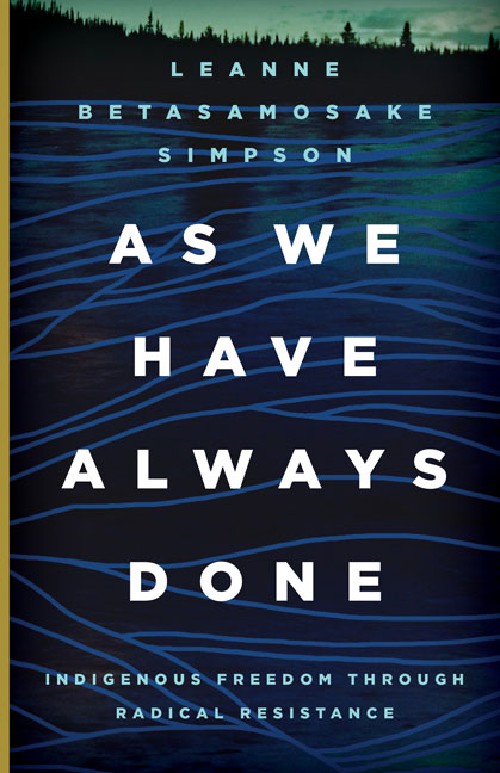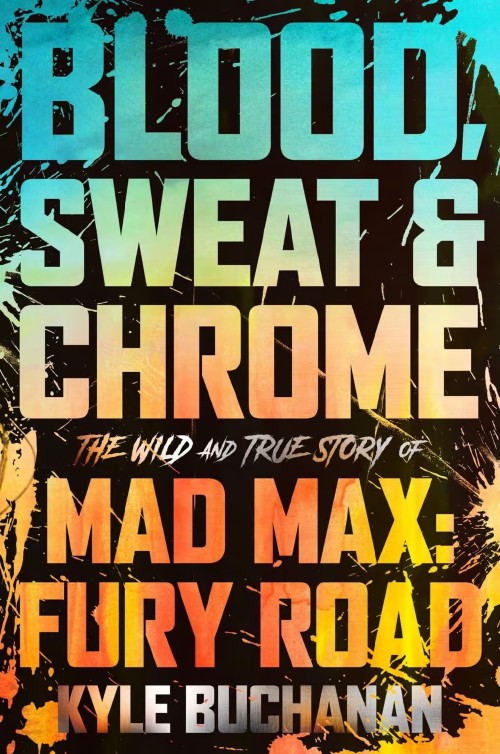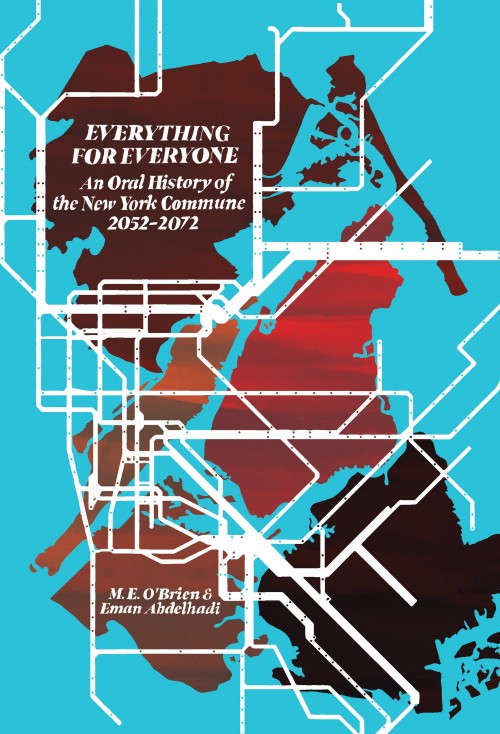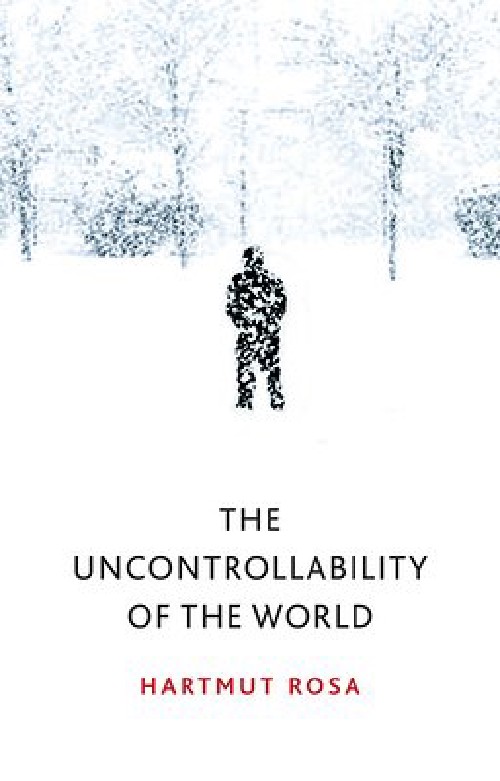
As We Have Always Done: Indigenous Freedom through Radical Resistance
Copyright 2020, University of Minnesota Press
Indigenous Issues
These highlights are things I found notable, and they are extensive, because this book is mind-expanding and wonderful. Please find it and read it, you will not regret it.
In this sense, in the past, Nishnaabeg woke up each morning and built Nishnaabeg life every day, using our knowledge and practices because this is what we are encouraged to do in our creation stories; these are our original instructions. This procedure or practice of living, theory and praxis intertwined, is generated through relations with Michi Saagig Nishnaabeg land, land that is constructed and defined by our intimate spiritual, emotional, and physical relationship with it. The procedure is our grounded normativity. Living is a creative act, with self-determined making or producing at its core. Colonized life is so intensely about consumption that the idea of making is reserved for artists at best and hobbies at worst. Making is not seen as the material basis for experiencing and influencing the world. Yet, Nishnaabeg life didn’t rely on institutionality to hold the structure of life. We relied upon process that created networked re-lationship. Our intelligence system is a series of interconnected and overlapping algorithms-stories, ceremonies, and the land itself are procedures for solving the problems of life. Networked because the modes of communication and interaction between beings occur in complex nonlinear forms, across time and space. There is necessarily substantial overlap in networked responsi-bilities, such that the loss of a component of the network can self-correct and rebalance. (p23)
Engagement changes us De-cause it constructs a different world within which we live. We live fused to land in a vital way. If we want to create a different future, we need to live a different present, so that present can fully marinate, influence, and create different futurities. If we want to live in a different present, we have to center Indigeneity and allow it to change us. (20)
I understand colonialism as an overwhelmingly dominating force in my daily life that continually attacks my freedom and well-being as kwe. Colonialism tries very hard to keep me off my land. It tries very hard to ensure I cannot speak my language, think as my Ancestors did, find comfort in elders or the river or the lake of rice. It tries very hard to get me to think in a particular way. It tries very hard to get me to resist in a particular way. It tries very hard to get me to move about my territory in a particular way. It controls how I make a living and how I feed my fam-ily. It tries to control the relationship I have with my children. It tries to control my sexuality, the ways I express my gender, how I take care of myself, and how I parent with escalating magnitudes of structural and interpersonal discipline and violence if I do not conform. It creates a world where I am never safe. It is a violent system of continual harm forced on my body, mind, emotions, and spirit designed to destroy my ability to attach to my land, to function as kwe, and to be a grounded, influencing agent in the world. I am interested in freedom, not survival, and as kwe, I understand my freedom is dependent upon the destruction of settler colonialism. (p44-45)
I am also not afraid to be radical, because when I hear stories of my Ancestors praying to the water every single day, before they had experience with pollution or with how bad things could get, I see these practices in my current context as a radical act of love. I think the epic nature of settler colonialism requires radical responses. Radical resurgence requires a deeply critical reading of settler colonialism and Indigenous response to the current relationship between Indigenous peoples and the state. Radical requires us to critically and thoroughly look at the roots of the settler colonial present -capitalism, white suprem-acy, heteropatriarchy, and anti-Blackness. Radical requires us to name dispossession as the meta-dominating force in our relationship to the Canadian state, and settler colonialism as the system that maintains this expansive dispossession. (p48)
Resurgence is hope for me because of its simultaneous dismantling of settler colonial meta-manifestations and its reinvigoration of Indigenous systemic alternatives -alternatives that have already produced sustainable, beautiful, principled societies. Yet we need more visioning, thinking, acting, and mobilization around these Indigenous systemic alternatives because creating the alternative is the mechanism through which freedom can be achieved. Engagement with Indigenous systems changes Indigenous peoples. It is a highly emergent and generative process. This requires less engagement with the state and more presence within Indigenous realities. This requires struggle and commitment. (p49)
In Nishnaabeg practices, our first intellectual, Nanabush, physically walked the world twice after it was created. Nanabush did not walk the world through a liberal lens to help “those less fortunate.” Nanabush did not walk the world to see how natural resources could be harnessed or how people could be exploited into a particular economic or political system. Nanabush walked the world to understand their place in it, our place in it, to create face-to-face relationships with other nations and beings because Nanabush understood that the Nishnaabeg, that we all, are linked to all of creation in a global community. On this epic journey around the world, Nanabush visited with the different human and nonhuman nations that make up our world. They shared and generated story, ceremony, song, and action. They carried with them the political and spiritual practices of the Nishnaabeg as they visited different nations’ homes. (…) On this journey, Nanabush very clearly demonstrates Nishnaabeg research ethics-consent, reciprocity, respect, re-newal, relationship. They also demonstrate methodology within this ethical framework- doing or making, relationship, visiting, singing, dancing, storytelling, experimenting, observing, re-flecting, mentoring, ceremony, dreaming, and visioning as ways of generating knowledge. (p57)
Before I use work by writers, scholars, and artists outside of the Nishnaabeg nation in my own writing and thinking, I ask myself the same series of questions. Where does this theory come from? What is the con-text? How was it generated? Who generated it? What was their relationship to community and the dominant power structures? What is my relationship to the theorist or their community or the context the theory was generated within? How is it useful within the context of my own people? Do we have a similar concept or theory? Can I use it in an ethical and appropriate way (my ethics and theirs) given the colonial context within which scholarship and publishing take place? What are the implications of citation, and do I have consent to take this intellectual thought and labor from a community I am not a part of? Does this engagement replicate anti-Blackness? Colonialism? Hetero-patriarchy? Transphobia? This critical process, I think, is a process that many Indigenous academics already do naturally, and the answers are not easy, nor will they be the same for everyone. (p63)
We hold a collective apathy around critiquing, organizing, and creating alternatives, despite the fact that Nishnaabeg people and our society are the alternative- we lived without capitalism for centuries. There is an assumption that socialism and communism are white and that Indigenous peoples don’t have this kind of thinking. To me, the opposite is true. Watching hunters and ricers harvest and live is the epitome of not just anticapitalism but societies where consent, empathy, caring, sharing, and individual self- determination are centered.
My Ancestors didn’t accumulate capital, they accumulated networks of meaningful, deep, fluid, intimate collective and individual relationships of trust. In times of hardship, we did not. rely to any great degree on accumulated capital or individualism but on the strength of our relationships with others. The Michi Saagig oral tradition has within it stories of Wendat and Roti-nonhseshá:ka / Haudenosaunee coming to us and asking to hunt or farm in our territory during times of famine. Our grounded normativity compelled us to assist our neighbors if we were able. We also have a series of embedded practices that redistribute wealth within the community. Harvests are distributed in community to our most vulnerable members–those who cannot harvest for themselves. Many of our ceremonial practices include a giveaway component where goods are distributed among participants. (p76-77)
When Nishnaabeg are historicized by settler colonial thought as “less technologically developed, there is an assumption that we weren’t capitalists because we couldn’t be–we didn’t have the wisdom or the technology to accumulate capital, until the Europeans arrived and the fur trade happened. This is incorrect. We certainly had the technology and the wisdom to develop this kind of econo-my, or rather we had the ethics and knowledge within grounded normativity to not develop this system, because to do so would have violated our fundamental values and ethics regarding how we relate to each other and the natural world. We chose not to, repeatedly, over our history. (p78)
Nanabush is the most obvious example of all of this. He experiments with capitalist modes of production when he tries to get various beings-skunks, ducks, geese, for example -to do the hard work of life for his own personal gain and accumulation. He tries in various stories to outsource the work of feeding himself, and disaster ensues. There are stories where he is greedy; he experiments with capital accumulation, and disaster ensues. There are stories of Nanabush manipulating animals to create competitive markets for his goods and services, and again disaster ensues. There are stories where Nanabush engages in a host of exploitive and extractivist practices at the expense of plants, animals, or the Nishnaabeg, and this results in his demise. His preference in these stories is to employ various beings of creation in service to him, while he lounges around and enjoys the profit of this unequal labor. He is categorically met with his demise every time, and eventually he learns his lesson. (p79)
Stereotypes are not attitudes that can be changed by using a different terminology. They are windows into the pervasive logics of white supremacy and heteropatriarchy and how they operate through time and space in Canada on my body and mind as an Indigenous woman. These terms are part of a much more omnipresent and ubiquitous system of control that has stolen not only my land from me but also my body and the way I think about my body. I am not murdered, and I am not missing, but parts of me have been disappeared, and I remain a target because I was born a Native women, and I live as kwe. (p91-92)
I sat with the trees and this pain, trying to make sense of things, like I am now, trying to figure out why the words squaw, slut, dirty Indian, and stupid have so much power over me. I considered that I don’t necessarily want to “heal,” because I am not damaged, or diseased, or unhealthy. My response to the inter-generational trauma of settler colonial violence is correct and strong and vital. I don’t believe that one can be Indigenous in Canada in 2016 and live a normal and fulfilling existence unless one is completely delusional and is living as a full Canadian; that is, with an unexamined, uncritical view of Indigenous-settler re-lations, or having adopted the measures of success of Canadian society to the point where one views the scars of oppression as cancers. I don’t want to be “healed. I want to have processed hurt and pain to the point where I can speak back to those words and harness the power of fear, hatred, and love into sustained mobilization-to the point where they don’t control me, but they are experiences I can draw on when it is useful to do so.
I need to place my emotional experience, my life, in a position of honor. I need to respect and listen to my intelligence as a cisgendered Indigenous woman and as an Indigenous person. As kwe. (p102-103)
While it has become the practice for segments of Canadian so-ciety, particularly the more liberal and well-meaning segments, to condemn racist stereotypes, this same group is immobilized with regard to land issues. As a result, it is possible to get, for instance, music festivals to ban hipsters from wearing Native headdresses, or sports teams to change their name from the Nepean Redskins, or even the word squaw to be removed from maps. These efforts have my respect but also my worry. Changing stereotypes are easy wins right now. They are easy because they are acceptable to the oppressor, and they only give the illusion of real change. It is not acceptable to wear a headdress to a dance party, but it is acceptable to dance on stolen land and to build pipelines over stolen land. It is not acceptable to call Indigenous women “squaws,” but it is acceptable to maintain all of the systems that target Indigenous women’s minds, bod-ies, and spirituality and to continue to exclude those political orders from governance and decision making that we perceive to be embodying these stereotypes. It is acceptable to undermine and attack our body sovereignty and self-determination. It is acceptable that we are not in control of how we want to use our bodies and our minds. It is acceptable that we are not free. In a sense, it is like the colonizer saying to me that colonialism, colonial gender violence, and Indigenous dispossession are now so entrenched in North America that we don’t even have to use racist stereotypes to maintain these systems. They perpetuate themselves.
Let me be clear, from within Nishnaabewin, the decisions about how I use my body, my mind, my sexuality, my spirituali-ty, and the relationship I’m embedded in are my decision and no one else’s. The regulation of my body, my brain, and my sexuality are attacks on my body as a political order, my nationhood, and my freedom, regardless of intent. I do not consent to have my freedom restricted by those who believe they know best for me and my body. I refuse. (p113-114)
All of this evidence points to what Two Spirit and queer people have always known from living as SQ in settler colo-nialism: 250 bodies and the knowledge and practices those bodies house as Indigenous political orders were seen as an extreme threat to settler society, sovereignty, dispossession, and the project of colonization, colonialism, and assimilation. The powerful relationships queer bodies house–consent, diversity, variance, spiritual power, community, respect, reciprocity, love, attachment-were the very first thing colonizers sought to elim-inate, and they began celebrating what they thought was the genocide of SQ people in my nation long before colonization reached nations on the West Coast or in the north. (p126)
While the intersections between queer theory and Indigenous Studies are interesting, I am more drawn to recovering how Indigenous theory, in my case how Nishnaabeg theory, conceptualizes gender or can conceptualize gender and sexual orientation because my sense is that my Ancestors lived in a society where what I know as “queer,” particularly in terms of social organization, was so normal it didn’t have a name.?* I’ve thought a great deal about Alex Wilson’s words quoted early in this chapter, and in my fiction writing I try to create story worlds where queerness is normalized. This is consistent with stories I’ve heard from queer and straight elders.25 It’s led me to consider what straightness looks like in societies where queerness is normalized, where difference isn’t difference but nor-mal. Queerness provides for and celebrates variance, including straightness, whereas heteropatriarchy sets out to destroy, con-trol, and manipulate difference into hierarchies that position white, straight, cisgendered males as normal, and everyone else as less. (p129)
In reality, I have to image myself in this situation because as a child, I don’t think I was ever in a similar situation. My experience of education from kindergarten to graduate school was one of coping with someone else’s agenda, curriculum, and ped-agogy, someone who was not interested in my well-being as a girl, my connection to my homeland, my language or history, or my Nishnaabeg intelligence. No one ever asked me what I was interested in, nor did they ask for my consent to participate in their system. My experience of education was one of continually being measured against a set of principles that required surrender to an assimilative colonial agenda in order to fulfill those principles. (p149)
To me, this is what coming into wisdom within a Michi Saagig Nishnaabeg epistemology looks like. It takes place in the context of family, community, and relation. It lacks overt coercion and authority, values so normalized within mainstream, Western pedagogy that they are rarely ever critiqued. The land, Aki, is both context and process. The process of coming to know is learner led and profoundly spiritual in nature Coming to know is the pursuit of whole-body intelligence practiced in the context of freedom, and when realized collectively, it generates generations of loving, creative, innovative, self-determining, in-terdependent, and self-regulating community-minded individ-uals. It creates communities of individuals with the capacity to uphold and move forward our political practices and systems of governance. (p151)
Nishnaabeg-Gikendaasowin, or Nishnaabeg knowledge, originates in the spiritual realm, coming to individuals through dreams, visions, and ceremony and through the process of gaa-izhi-zhaawendaagoziyaang-that which is given lovingly to us by the spirits.” This makes sense because this is the place where our Ancestors reside, where spiritual beings exist, and where the spirits of living plants, animals, and humans interact.To gain access to this knowledge, one has to align oneself within with the forces of the implicate order through ceremony, ritual, and the embodiment of the teachings one already carries.
Within this system there is no standard curriculum because it is impossible to generate a curriculum for “that which is given to us lovingly from the spirits,” and because it doesn’t make sense for everyone to master the same body of factual informa-tion. Nishnaabeg society in its fullest realization requires a diversity of excellence to continue to produce an abundance of supportive relationships. Within the context of humility and agency, decisions about learning are in essence an agreement between individuals and the spirit world. Nishnaabewin fosters and cherishes individuals with particular gifts and skills as a mechanism for growing diversity, and childhood is an excellent time for individuals to focus in on those particular gifts and hone them into excellence. Just as it is unthinkable within an Nishnaabeg worldview for a leader to impose their will on their people, it is unthinkable to impose an agenda onto another living thing-in essence the context is the curriculum, and land, Aki, is the context. (p155)
Coming to know also requires complex, committed, consensual engagement. Relationships within Nishnaabewin are based upon the consent–the informed (honest) consent-of all beings involved. The word consensual here is key because if children learn to normalize dominance and nonconsent within the context of education, then nonconsent becomes part of the normalized tool kit of those with authoritarian power. Within the context of settler colonialism, Indigenous peoples are not seen as worthy recipients of consent, informed or otherwise, and part of being colonized is engaging in all kinds of processes daily that given a choice, we likely wouldn’t consent to. In my experience of the state-run education system, my informed consent was never required. Learning was forced on me using the threat of emotional and physical violence. In postsecondary education, consent was coercive: if you want these credentials, this is what you have to do, and this is what you have to endure. This is unthinkable within Nishnaabeg intelligence. In fact, if there isn’t a considerable amount of demonstrated interest and commitment On the part of the learner, learning doesn’t occur at all. Raising Indigenous children in a context where their consent, physical and intellectual, is not just required but valued goes a long way to undoing the replication of colonial gender violence.(p161-162)
Nishnaabewin did not and does not prepare children for successful career paths in a hypercapitalistic system. It is designed to create self-motivated, self-directed, community-minded, in-terdependent, brilliant, loving citizens who at their core uphold our ideals around family, community, and nationhood by valuing their intelligences, their diversity, their desires and gifts, and their lived experiences. It encourages children to find their joy and place it at the center of their lives. It encourages children to value consent. This was the key to building nations where exploitation was unthinkable. But don’t our children have to live in a hypercapitalistic system? Well yes, and if we are going to survive this as Nishnaabeg, we need to create generations of people who are capable of actualizing radical decolonization, diversity, transformation, and local economic alternatives to capitalism. (p172-173)
This kind of Indigenous collective self recognition is a core, place-based practice. It is a core, living concept of Nishmaabeg grounded normativity because it is a mechanism in which, de. spite environmental destruction and settler colonial strangula-tion, we continually throughout our lives and throughout the day reinsert ourselves in the network of living relationships that give us meaning. Indigenous internal, reciprocal self-recognition is a mechanism through which we reproduce and amplify Indigeneity. When another Indigenous person recognizes and reflects back to me my Nishnaabeg essence, when we interact with each other in an Nishnaabeg way, my Michi Saagig Nishnaabewin deepens. When my Indigeneity grows, I am more connected. I fall more in love with my homeland, my family, my culture, and my language and more in line with the thousands of stories that demonstrate how to live a meaningful life, and I have more emotional capital to fight and protect what is meaningful to me. I am a bigger threat to the Canadian state and its plans to build pipelines across my body, clear-cut my forests, contaminant my lakes with toxic cottages and chemicals, and make my body a site of continual sexualized violence. (p182-183)
Resurgent organizing, then, has to be concerned with building a generation of Indigenous nationals from various Indigenous nations who think and act from within their own intelligence systems; who generate viable Indigenous political systems; who are so in love with their land, they are the land; who simply refuse to stop being themselves; who refuse to let go of this knowledge; and who use that refusal as a site to generate another generation who enact that with every breath, birth, * and political engagement and in every moment of their daily existence.10 Resurgent organizing must create a future generation that never has to ask how to live free, because they’ve never * known anything else -a generation that does not know shame, because they are embedded in each other’s light. (p188-189)
This movement-building step is critical in all movements, but it is particularly crucial to think this through in the age of the Internet, when a seemingly easy shortcut exists. Seeming-ly, because on a very basic level, I wonder how the Internet, as another structure of control whose primary purpose is to make corporations money, is at all helpful in building movements. I wonder if the simulated worlds of the Internet are simulations that serve to only amplify capitalism, misogyny, transphobia, anti-queerness, and white supremacy and create further dependencies on settler colonialism in the physical world. I wonder if this creates further alienation from oneself, from Indigenous thought and practices, and from the Indigenous material world. I wonder if this is a digital dispossession from ourselves because it further removes us from grounded normativity. The Internet is the ultimate Cartesian expression of mind and mind only. There are no bodies on the Internet. There is no land. Insertion of Indigeneity in cyberspace is not insertion of Indigeneity in the physical world. As much as it pains me to admit, grounded normativity does not structurally exist in the cyber world, because it is predicated on deep, spiritual, emotional, reciprocal, real-world relationships between living beings. (p221)
Again and again, it matters to me how change is achieved. if I think back to my creation stories -whether it’s the Seven Fires story, the story of Nanabush and the turtle’s back, the story for Kinomagewapkong, the people that were created from the ocean, those spontaneous humans–the creation of the world within Nishnaabeg thought comes from struggle.2 It was never easy. Mistakes were made. Prototypes were built. It came from a being or beings, fully engaged in a creative process that was a process of struggle. This is in stark contrast to Christian creation stories, where the world was made in seven days and then given to humans. Nishnaabeg worlds were created, collectively, out of struggle, and the process of creating and creation was given to us, not the results of that. The process, not the results. (p228)
I think resurgent mobilization necessarily points us in a different direction because there is virtually no room for white people in resurgence. Whiteness is not centered in resurgence It we recognize settler colonialism to be dispossession, capitalism, white supremacy, and heteropatriarchy, that recognition points us to our allies: not liberal white Canadians who uphold all four of these pillars but Black and brown individuals and communi ties on Turtle Island and beyond that are struggling in their own localities against these same forces, building movements that contain the alternatives. These are our allies, yet during Idle No More, we had almost no relationship with any of these communities, not because these communities weren’t interested in us, but primarily because, again, we hadn’t done the work of relationship building before mobilizing. (p229)
Placing Indigenous bodies on the land in any Indigenous context through engagement with Indigenous practices is direct action. Anything we do that af firms the bodies, minds, and experiences of Indigenous women and 2SQ people as the embodiment of Indigenous political orders is direct action. Everyday acts of resurgence are direct action. Resurgent organizing, mobilizing, and political action have the potential to change the framing of this conversation in a significant and powerful way. Organizing that is based on the critical animation and embodiment of Indigenous intelligence leads to place-based organizing, nation-based organizing, and organizing that illuminates Indigenous processes- the how. Resurgent organizing clearly lives out Indigenous values and ethics. It strengthens ties to Indigenous practices- ceremony, politics, decision making, leadership, language, gender, and land. It approaches the state from grounded normativity, from a reciprocal Indigenous recognition, from a place of strength. It comes at organizing from a completely different place: we are not begging the colonizer for attention, for money, for sympathy, for rights, for recognition, or for moral benevolence. There isn’t necessarily a list of demands, because lists of demands are either ignored as being structurally impossible while maintaining the system of settler colonialism, or are absorbed into the neoliberal state to ensure real change doesn’t occur. We don’t need a list of demands, because we are the demand. We are the alternative. We are the solution, based on our own nation-based conceptu-alizations of ourselves. Our bodies and the political orders they house are the demand. Our embodied alternative is the solution.Building movements that embody the Indigenous alternative in structure, process, and formation that are brilliant expressions of international grounded normativities changes the game. (p236-237)
This book cannot end with a section on future directions for this research that is counter to what I think is the central point of this book: Indigenous futures are entirely dependent upon what we collectively do now as diverse Indigenous nations, with our Ancestors and those yet unborn, to create Indigenous presences and to generate the conditions for Indigenous futures by deeply engaging in our nation-based grounded normativities. We must continuously build and rebuild Indigenous worlds. This work starts in motion, in decolonial love, in flight, in relationship, in biiskabiyang, in generosity, humility, and kindness, and this is where it also ends. I cannot be prescriptive here because these processes are profoundly intimate and emergent and are ultimately the collective responsibilities of those who belong to unique and diverse Indigenous nations. I don’t want to imagine or dream futures. I want a better present. (p246)



